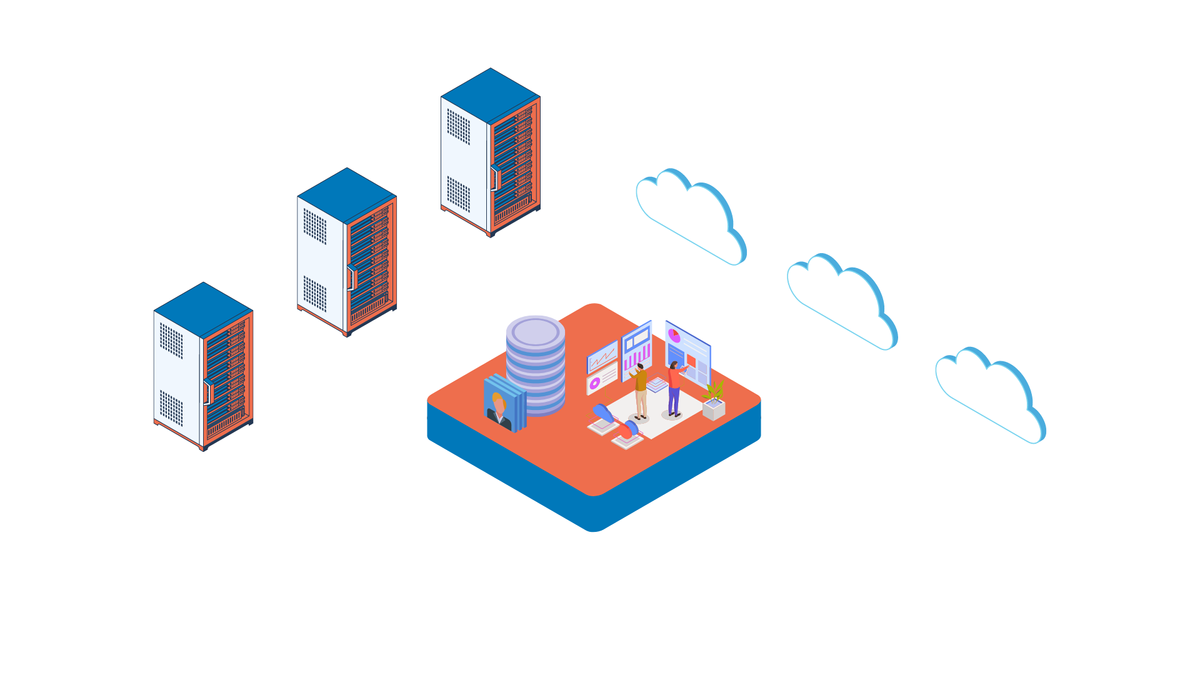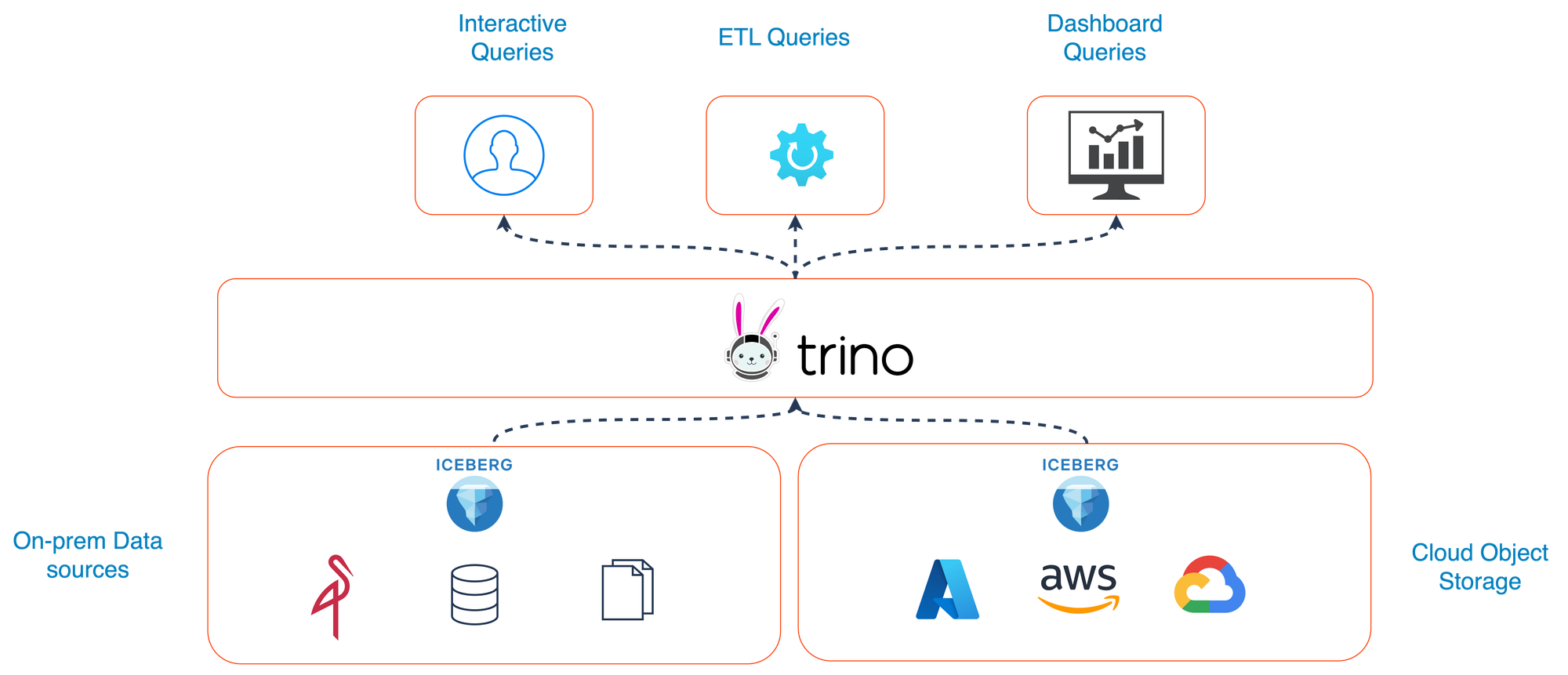Top 3 Benefits of Building Hybrid Apache Iceberg Data Lakehouses

The Data Lakehouse architecture has become crucial for optimizing cost, performance, and agility in data management. While cloud-based data lakehouses with providers like AWS, Azure, Google, and Snowflake offer numerous advantages, they also come with their own set of challenges. Similarly, on-premises (on-prem) data lakehouses, supported by storage solutions from vendors like Vast, NetApp, and MinIO, present unique benefits and drawbacks. To address the limitations of both approaches, many organizations are now adopting a Hybrid Data Lakehouse model, which combines the strengths of both cloud and on-prem environments. These hybrid setups can be unified through a Data Lakehouse platform like Trino, which seamlessly connects to both cloud and on-prem data sources, often utilizing the Apache Iceberg format to enhance data portability and performance. In this article, we’ll explore the advantages of cloud and on-prem data lakehouses and why a Hybrid approach might be the best fit for your organization.
Cost Efficiency: Maximizing Your Investment
One of the primary motivations for adopting a hybrid data lakehouse is the potential for significant cost savings. While cloud storage solutions offer flexible pricing models that can adapt to your data growth, the long-term costs of storing large volumes of data in the cloud can add up, particularly due to ongoing storage fees and data transfer charges. On the other hand, on-prem storage can offer more predictable and potentially lower costs over time, especially if you already have the necessary infrastructure in place.
A hybrid approach allows you to strategically manage your data based on cost-effectiveness. Frequently accessed data and workloads that require intensive computation can be stored in the cloud to take advantage of its scalability. Meanwhile, data that is accessed less frequently or is archived can be kept on-prem, helping to minimize ongoing expenses. By balancing your data across both environments, you can optimize your overall storage and processing costs.
Performance and Latency: Optimizing for Speed
Performance and latency are critical considerations in data processing and analytics. While cloud data lakehouses provide the advantage of scalability, they can sometimes be affected by latency, particularly if there is a physical distance between your data and compute resources, or if your organization requires extremely fast data access.
On-prem data lakehouses can offer lower latency because the data and compute resources are located closer together, resulting in faster data retrieval and processing times. This is particularly important for real-time processing tasks or when data sovereignty is a concern. Additionally, on-prem systems can be tailored more precisely to specific workloads, providing an opportunity for even greater performance enhancements.
By adopting a hybrid model, you can position critical applications and low-latency data on-premises, while leveraging the cloud for tasks that require extensive computation and scalability. This strategy allows you to achieve optimal performance without sacrificing the benefits of cloud scalability.
Agility and Flexibility: Adapting to Change
In today’s fast-paced business environment, agility and flexibility are essential. Cloud platforms provide unmatched agility, enabling you to quickly deploy new services, scale resources, and implement updates with minimal downtime. This flexibility is especially valuable for development, testing, and deployment, allowing your organization to bring new applications and features to market more quickly.
While on-prem solutions might not offer the same level of rapid adaptability, they do provide greater control over your environment, which is critical for meeting regulatory and compliance requirements. On-prem systems also allow for custom configurations that may not be possible in a cloud setting.
A hybrid data lakehouse leverages the agility of the cloud while maintaining the control and customization capabilities of on-prem solutions. This approach ensures that your data infrastructure is not only responsive to current business needs but also adaptable to future demands. By integrating platforms like Trino with the Apache Iceberg format, you can achieve a seamless connection between cloud and on-prem environments, ensuring consistent data management and analytics with improved portability and performance.
Key Components of a Hybrid Data Lakehouse
A Hybrid Data Lakehouse leverages both cloud and on-prem resources to create a flexible, cost-effective, and high-performance data architecture. The key components of this architecture include the Cloud Data Lake, the Data Lakehouse Platform, and the On-Prem Data Lake. Let’s take a closer look at each component and how they contribute to the overall system.
Cloud Data Lake
Leading cloud providers like AWS, Google Cloud, and Azure offer robust data storage solutions that form the core of the cloud portion of a hybrid data lakehouse. These platforms provide the flexibility to scale resources up or down as needed, ensuring your data lake can handle varying workloads efficiently. This elasticity is essential for dynamic data processing tasks, as well as for supporting development and testing environments.
Data Lakehouse Platform
Trino serves as a powerful platform within the hybrid data lakehouse, connecting both cloud and on-prem data sources to enable seamless data management and analytics. By integrating with the Apache Iceberg table format, Trino ensures data portability and optimized performance across different environments. Trino’s features, such as query acceleration, data reflections, and a self-service semantic layer, allow users to perform fast, interactive analytics on large datasets without the need for complex ETL processes. This platform plays a crucial role in providing a unified view of data, enabling seamless access and analysis across various environments.

On-Prem Data Lake
On-prem storage solutions, provided by vendors like Vast, NetApp, and MinIO, offer the advantage of lower latency and greater control over data management. These systems can be tailored to specific workloads, providing enhanced performance and ensuring compliance with regulatory requirements. In a hybrid data lakehouse, on-prem storage is particularly valuable for storing archival data or data that requires low-latency access.
Conclusion
Hybrid Apache Iceberg Data Lakehouses represent the future of data architecture, offering a blend of cloud and on-prem solutions to deliver optimal cost, performance, and agility. By strategically leveraging the advantages of each environment, organizations can build a robust, flexible, and efficient data infrastructure. Platforms like Trino play a critical role in this hybrid approach by connecting various data sources and utilizing the Apache Iceberg format, ensuring that your data is always accessible and performant, regardless of its location. Whether your goal is to optimize costs, improve performance, or increase agility, a hybrid data lakehouse could be the ideal solution for your data management needs.
To deploy your own data lakehouse in hours on your own cloud/on-prem, Or just want to know more about how it works?
Get in touch with me here.
